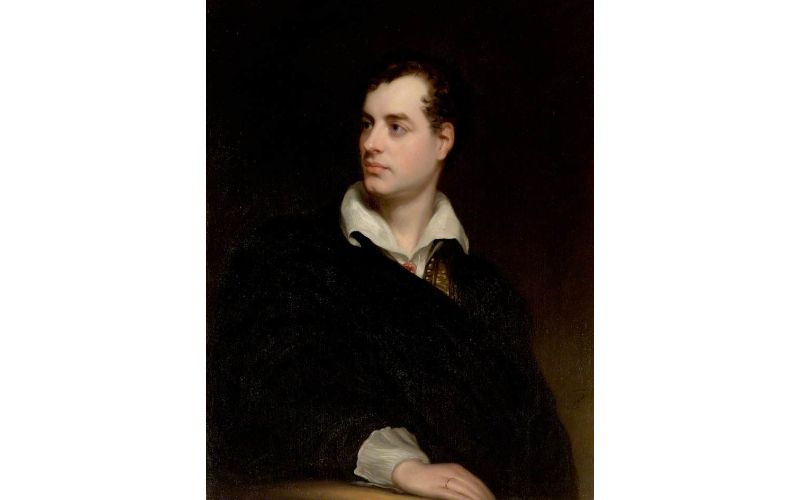100 Heroes: Lord Byron
The gay man who became one of the leading figures of the Romantic movement.

George Gordon Byron, the 6th Baron Byron, was a poet who is now known simply as Lord Byron.
He became one of the leading figures of the Romantic movement, and is regarded as one of the greatest English poets.
Early life
Byron was born in 1788 - probably in London, but possibly in Dover.
At the age of 10, he inherited the English Barony of Byron of Rochdale, becoming Lord Byron.
In 1801, he was sent to Harrow, where he studied until July 1805. Biographers point to several significant relationships during his school years at Harrow, including John FitzGibbon, and John Thomas Claridge.
From Harrow, Byron went to Trinity College in Cambridge. Here, he formed a close bond with John Edleston. Other significant relationships from the Trinity years include John Cam Hobhouse, and Francis Hodgson.
Career
Byron had his first collection of poems published when he was 17.
His reputation as a writer quickly grew, fuelled by controversy and acrimonious feuds with critics.
As his career began to take off, one of Byron's significant relationships was with Thomas Moore.
Byron's travels
From 1809 to 1811, Byron went on the Grand Tour, then customary for a young nobleman.
Letters to Byron from his friend Charles Skinner Matthews reveal that one of Byron's objectives on his travels was to pursue sexual encounters with men.
While in Athens, Byron met 14-year-old Nicolo Giraud. Their relationship was one of the highlights of Byron's travels.
Byron the celebrity
On his return to England, Byron's star was in the ascendancy.
He was at the heart of fashionable society in London and his writing was widely celebrated.
Byron was described - by Lady Caroline Lamb - as mad, bad, and dangerous to know.
By 1816 - involved in numerous scandals and deeply in debt - Byron decided to leave England.
Byron in exile
Byron spent time in Switzerland, Venice, Ravenna, Pisa, and Genoa.
In 1823, he accepted an invitation to travel to Greece - there was a movement pushing for independence from the Ottoman Empire.
Byron became deeply committed to the cause for Greek independence. He spent most of his fortune supporting the Greek forces.
During this time, Byron had a relationship with his young page, Lukas Chalandritsanos.
Death
In 1824, while planning attacks against the Ottoman forces, Byron fell ill. He was suffering from a violent fever and died in Missolonghi. He was 36.
Legacy and influence
Byron is considered to be the first modern-style celebrity. His self-awareness and personal promotion are seen as a beginning to what would become the modern rock star - he would instruct artists painting portraits of him not to paint him with pen or book in hand, but as a man of action.
One of Byron's most significant legacies is the concept of the Byronic hero. This is a theme that is illustrated through much of Byron's work, but also in the way that he lived his life.
The Byronic hero presents an idealised, but flawed character whose attributes include - great talent, great passion, and a distaste for society and social institutions. This is a man who has a lack of respect for rank and privilege, although possessing both. He is a passionate man but is thwarted in love by social constraint or death, rebellion, exile, an unsavoury secret past, arrogance, overconfidence or lack of foresight, and his self-destructive manner. Characters that embody the elements of the Byronic hero have become ubiquitous in literature and politics - it is one of our most recognisable storytelling frameworks.